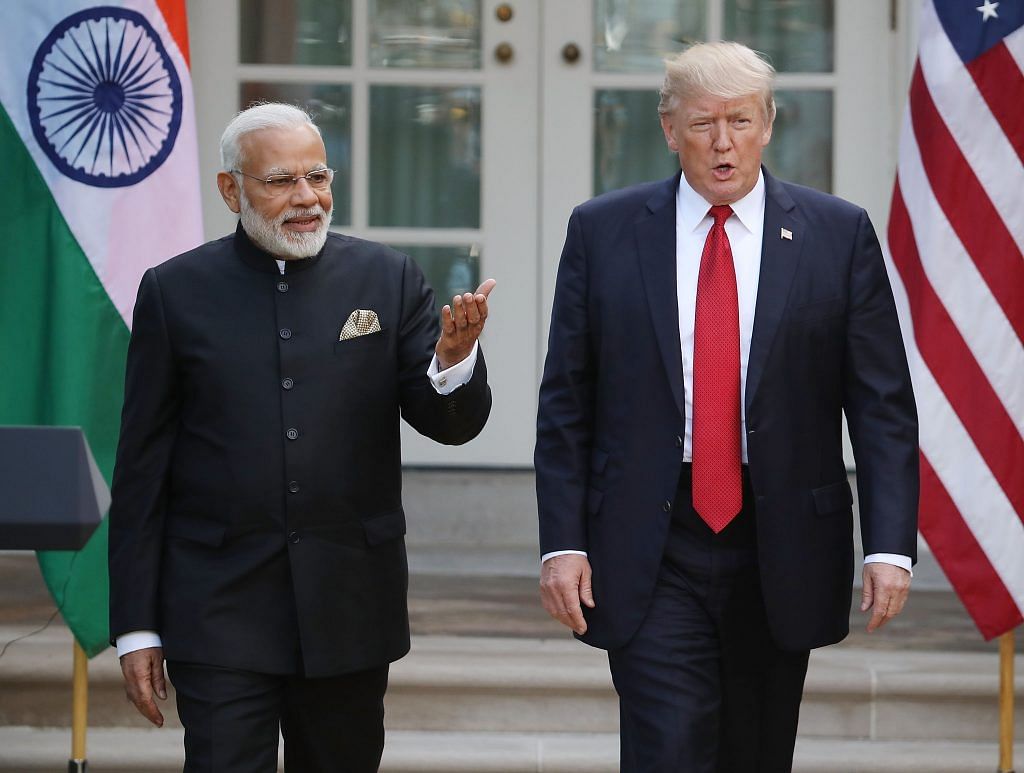Both Modi and Trump manufacture their authenticity with fake news, peddled through Facebook in the US and WhatsApp in India.
The Modi government, an RTI query revealed last week, has spent a tidy Rs 3,755 crores on publicity since taking the reins of the Indian state in mid-2014. No surprise there. On any trip to India, one is greeted with Modi’s face everywhere, from billboards to the front pages of newspapers, addressing every demographic from toddlers to the elderly, with a snappily named scheme promising the earth to each group. This is complemented by favourable TV coverage of Modi doing things like releasing books about himself, in soft focus that would put 1980s Doordarshan-era Lux soap advertisements to shame.
His social media presence has a divine omniscience about it: like God he is everywhere (except Parliament). Turn on the radio and you get Modi’s slightly bizarre theories on topics as varied as education, cows, gender, and parental love on his Mann ki Baat show.
Across the kaala paani, a similar story plays out.
Donald Trump displays his own media addiction — watching 4 to 8 hours of cable TV a day, while pounding diet coke after diet coke. The New York Times story on the US President’s daily schedule describes his relationship with the media as war, which Trump seeks to win each day. Trump is in battle mode all the time. Modi descends to bare-knuckled vulgarity at key moments like election time, as the BJP’s campaign in Gujarat during these last two weeks has shown.
It is a telling irony that both these men, who describe themselves as authentic and indeed are seen as such by swathes of their followers, should depend on the media for conjuring that aura of authenticity. To compound the irony, this manufactured authenticity is also dependent on fake news, peddled through Facebook in the US and WhatsApp in India, even as it allows Trump and Modi to claim they are the real deal in an age of media hype.
As cocaine is to rock stars, so media is to Modi and Trump. Take the media away from them and they wilt. Trump’s tweets reveal that he cannot escape the single worst aspect of Twitter: the urge it provokes in users to have the last word on every exchange. His tweets reveal another pattern too. If there is nothing in the news cycle that could naturally draw a combative response from him, he invents such an event.
At an event honouring Native American veterans, Trump pejoratively referred to Senator Elizabeth Warren as Pocahontas. Modi’s grand descent on the Sabarmati in a foreign-made seaplane a couple of days ago in the last phase of campaigning in Gujarat has drawn hilarious comment on his urge to compete with Anushka Sharma’s lehenga.
The point is well-made. Modi is both star-struck and star aspirant, seeing himself as the hero not just of his own story but of a new India in a new global order as well.
But the media is a fickle mistress. And like any addiction it takes its toll on addicts. Like the narcissism of millennial YouTubers and habitual Google self-searchers, Modi and Trump seem to need more and more of their fix as time goes by.
In Modi’s case, he demands, through the actions of his government, an ever more uncritical and docile media. His steadfast refusal to be questioned by journalists is complemented by increasingly self-aggrandizing claims. These proclivities are reinforced by the unremitting hostility of pro-BJP mediapersons and the BJP IT cell towards the imaginary figure of the ‘Modi hater’.
Trump, too, thrives on the idea of being persecuted, a perception fed by his view of channels like CNN, which he perceives as out to get him. In Trump’s grim view of the world, everyone is out to get everyone else. And the cycle of cable news feeds him no dearth of imagined opponents.
The longer Trump and Modi spend in the limelight, the more the cracks in the facade show. Modi’s claim to statesmanship, a stretch to begin with anyway, has been damaged by his petty remarks about his predecessor, Dr Singh. Trump’s unpredictable and overblown reactions to everything are the only predictable thing about his presidency. Widely perceived as a precariously surviving politician, Trump is in office only because the Republicans view him as a means to the end of keeping power and as an instrument to effect policy changes they have long wished to implement.
The Trump presidency is like a tacky reality show mated with an even tackier soap opera, the Modi Sarkar like a mediocre Bollywood film whose hero changes more costumes than a heroine in a Karan Johar film. The electorate in each country may replace these protagonists in the next election. But the combustible mix of media and politics in our age of self-absorption is likely to throw up similar figures again.
As a plebian in Shakespeare’s Julius Caesar comments, in response to Mark Anthony’s stirring tribute to Caesar on the death of the latter, “I fear there will a worse come in his place.” Modi and Trump have inaugurated a type. They may both be sui generis but with media and the zeitgeist of narcissism going nowhere, it is only a matter of time before we see worse versions of them.
Rohit Chopra is an associate professor at Santa Clara University.
